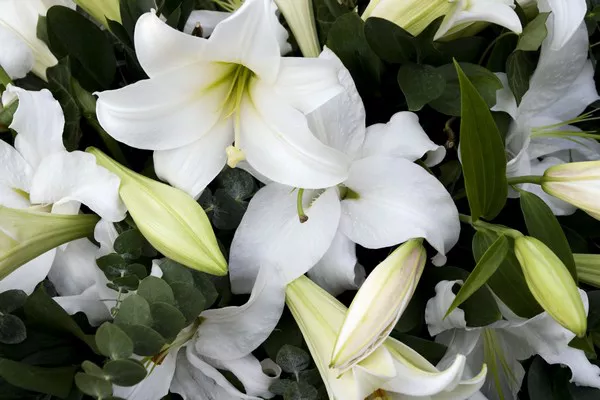Jasmine, with its enchanting fragrance and delicate blooms, is a beloved addition to many outdoor spaces. However, the disappointment of a jasmine plant not flowering can be disheartening for garden enthusiasts.
Choosing the Right Jasmine Variety
The first step in unraveling the mystery of non-flowering jasmine is to ensure you have selected the appropriate variety for your climate and soil conditions. Different species of jasmine have specific requirements, and a mismatch between the plant and its environment can hinder flowering. Consider factors such as sunlight exposure, soil pH, and climate appropriateness when choosing a jasmine variety for your outdoor space.
Sunlight and Temperature Considerations
Jasmine, being a sun-loving plant, requires ample sunlight to initiate and sustain flowering. Inadequate exposure to sunlight is a common reason for jasmine plants not flowering. Ensure that your outdoor jasmine receives at least 6-8 hours of direct sunlight per day. Additionally, be mindful of temperature fluctuations, as jasmine plants may struggle to bloom in extreme heat or cold conditions. Ideal temperatures for jasmine flowering generally range between 60°F to 75°F (15°C to 24°C).
Soil Quality and Composition
The health of the soil is a critical factor in jasmine flowering. Jasmine plants thrive in well-draining soil that is rich in organic matter. Poor soil quality or improper drainage can lead to waterlogged roots, depriving the plant of essential nutrients and oxygen. Conduct a soil test to determine the pH level and nutrient content of your soil. Adjustments can be made by incorporating organic amendments or fertilizers to create a more hospitable environment for your jasmine.
Watering Practices
While jasmine appreciates consistently moist soil, overwatering can be detrimental to flowering. Waterlogged soil can lead to root rot, a condition that hampers the plant’s ability to absorb nutrients and bloom. Conversely, underwatering can stress the jasmine plant, inhibiting flowering. Establish a balanced watering routine, allowing the soil to dry slightly between waterings. Mulching around the base of the jasmine can help regulate soil moisture and temperature.
Pruning Techniques
Pruning is a crucial aspect of jasmine care, and improper pruning practices can hinder flowering. Jasmine generally blooms on the previous season’s growth, so indiscriminate pruning can remove potential flower buds. If your jasmine is not flowering, evaluate your pruning routine. Prune after the flowering season, cutting back only where necessary to shape the plant and remove dead or diseased wood. Avoid aggressive pruning during the growing season to preserve potential bloom sites.
Fertilization Practices
Jasmine plants benefit from regular fertilization, but excessive or improper use of fertilizers can negatively impact flowering. A balanced, slow-release fertilizer formulated for flowering plants is ideal for jasmine. Apply fertilizer in early spring and again in late summer, following package instructions for dosage. Avoid over-fertilizing, as an excess of nitrogen can promote lush foliage at the expense of flowers. Additionally, consider incorporating organic matter, such as well-rotted compost, into the soil to enhance nutrient levels.
Pest and Disease Management
Pests and diseases can stress jasmine plants, impeding their ability to flower. Aphids, spider mites, and fungal infections are common culprits. Regularly inspect your jasmine for signs of infestation or disease, and take prompt action to address the issue. Insecticidal soaps or neem oil can be effective against pests, while proper spacing and adequate air circulation help prevent fungal infections. A healthy, pest-free jasmine is more likely to allocate energy towards flowering.
Understanding Seasonal Variations
Jasmine flowering is often influenced by seasonal variations. Different jasmine varieties may have specific blooming seasons, and environmental cues trigger flowering. Some jasmine plants bloom in late spring, while others may flower in summer or early fall. Familiarize yourself with the specific blooming pattern of your jasmine variety to set realistic expectations. If your jasmine is not flowering during its expected season, reassess the environmental conditions and care routine.
Root Health and Container Considerations
For those cultivating jasmine in containers, root health is paramount for successful flowering. Over time, the roots of container-grown jasmine can become pot-bound, restricting nutrient absorption. Regularly inspect the root system and consider repotting every 2-3 years, replacing old soil with fresh, well-draining potting mix. Adequate container size is also crucial, as cramped roots can negatively impact overall plant health and flowering capacity.
Stress Management for Jasmine Plants
Jasmine plants are sensitive to stress, and any form of stress, be it from environmental factors or pests, can impact their ability to flower. Minimize stress by providing consistent care, avoiding sudden changes in environmental conditions, and promptly addressing any issues such as pest infestations or diseases. A stress-free jasmine is more likely to devote energy to blooming.
Patience and Observation
Lastly, cultivating blooming jasmine requires patience and careful observation. Even with optimal care, some jasmine varieties may take time to establish and initiate flowering. Keep a gardening journal to track changes in environmental conditions, care routines, and any adjustments made. Sometimes, the simple act of waiting and observing can provide valuable insights into the specific needs of your jasmine plant.
Conclusion
In conclusion, a non-flowering jasmine can be a source of frustration for gardeners, but with a systematic approach to care and a keen understanding of the plant’s needs, you can encourage your jasmine to burst into bloom. From selecting the right variety to managing environmental conditions, each aspect of jasmine care plays a role in fostering a healthy and flowering plant. Remember, successful gardening requires a combination of knowledge, patience, and a genuine appreciation for the intricacies of the natural world.


